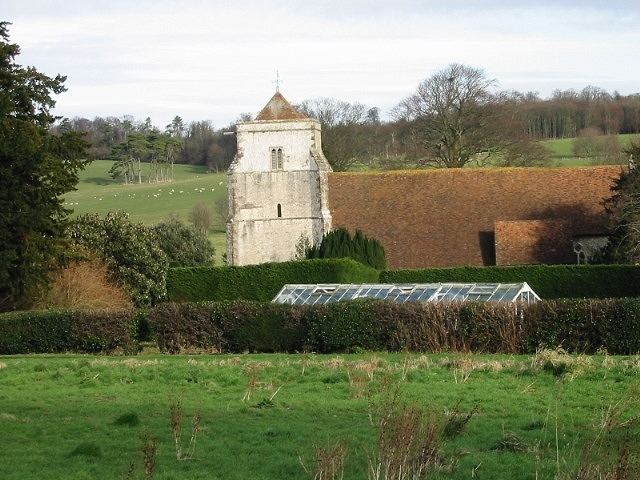OS grid reference TR189526 Sovereign state United Kingdom Local time Thursday 8:08 PM | Civil parish Bishopsbourne Area 9.18 km² Dialling code 01227 | |
 | ||
Population 257 (Civil Parish 2011) Weather 6°C, Wind SW at 16 km/h, 78% Humidity | ||
Bishopsbourne is a mostly rural and wooded village in Kent, England. It has two short developed sections of streets at the foot of the Nailbourne valley 4 miles (6 km) south-east of Canterbury and centred 9 miles (14 km) from Dover. The settlement of Pett Bottom is included in the civil parish.
Contents
Map of Bishopsbourne, UK
Geography
High-up Goresley Wood occupies about half of the parish, which rises gradually in the south-west. A Roman Britain collective burial mound (tumulus) is at a point in the north-centre of this small forested area.
Amenities
A pub trades in Bishopsbourne, The Mermaid, built in 1861 and is the sole business, sustained by tourism in the summer.
Its church, St Mary's is one of the Church of England, with 14th-century wall paintings (murals). It is listed in the highest grading of the national system at Grade I.
History
In 1844 an excavation at Bourne Park in the civil parish (and always in the village's boundaries) revealed Iron Age remains. Mozart visited Bourne Park House in 1765. 10 buildings in the village are listed in the National Heritage List for England and a wall.
On 30 August 1940, a Spitfire piloted by Sgt J I Johnson was shot down and crashed near Bishopsbourne. The pilot was killed.
Sport
Bishopsbourne’s Bourne Paddock was a pioneering venue for “great cricket". The third earliest match of all time (recognised by Cricinfo statisticians as First-Class) was played there between England and Hampshire on 19 and 20 August 1772.
The first time that centuries were scored by two batsmen in the same innings in First-class cricket was by Tom Walker and Thomas Taylor for White Conduit Club against Kent on Bourne Paddock. The match was played from 8 to 12 August 1786, and is one of the earliest five-day matches on record. The last First-Class match on the Paddock was played in 1790.
Transport
Bishopsbourne had a station on the Elham Valley Railway until traffic stopped in 1947, the station building is now a private residence.
Notable residents
Richard Hooker was the Rector from 1595 to 1600. Hooker played a significant part in the development of Anglicanism, championing a 'middle way' between Puritanism and Catholicism. His 8-volume work 'The Laws of Ecclesiastical Polity' was partly written in the Rectory at Bishopsbourne. After his death, he was buried in the Chancel of the church, and a memorial to him was provided by William Cowper.
"Oswalds", the house of author Joseph Conrad, still stands and the village hall is called "Conrad Hall" in his honour. The author Jocelyn Brooke lived in a house called "Forge House", just opposite the village hall. Photographic pioneer Joseph Bancroft Reade was rector from 1863 until his death in 1870, and is buried at St Mary's.
